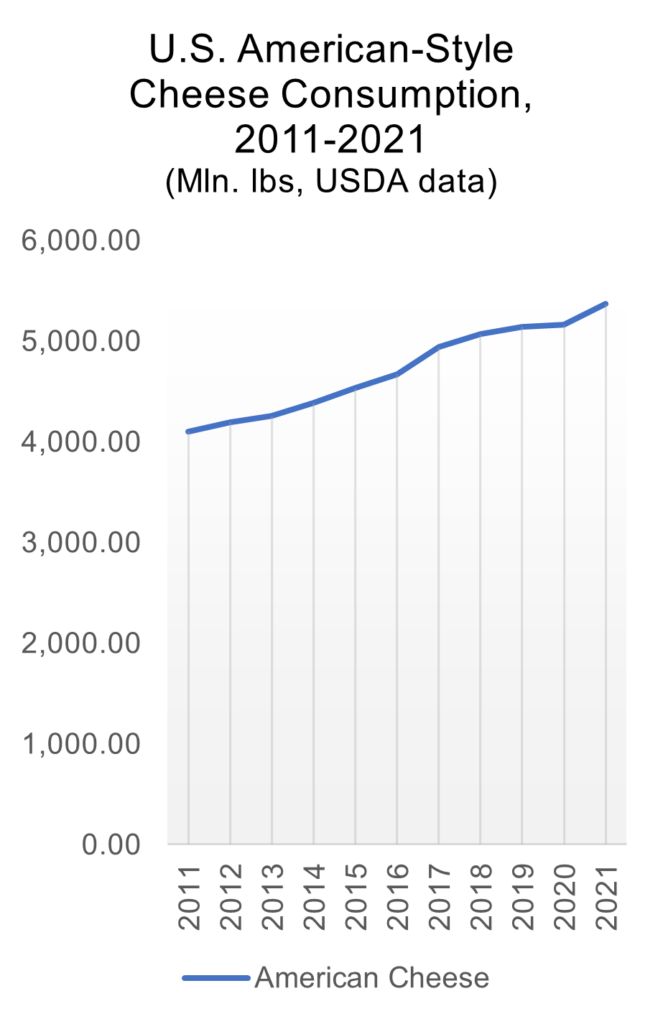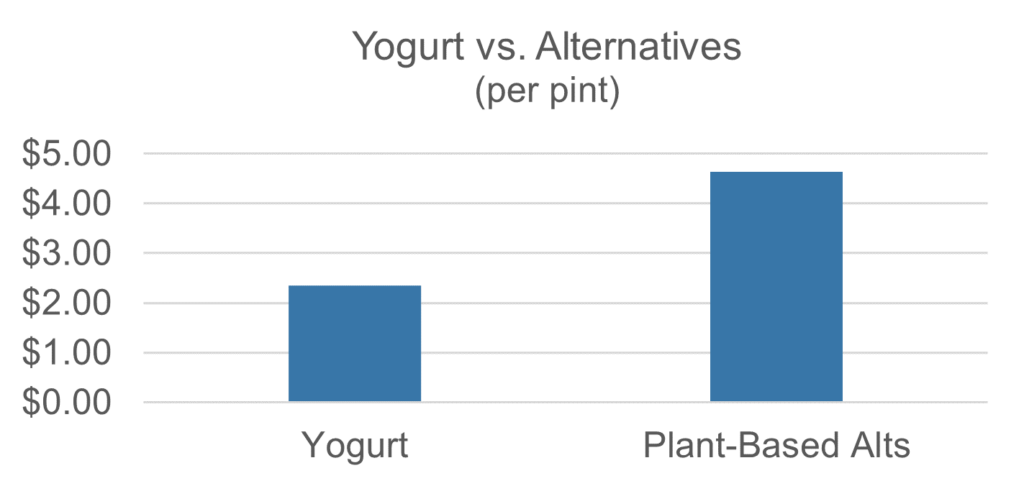The marketers are at it again, breathlessly promoting “innovation” as a storm of startups gather, each hoping to cash out their venture capital before their business models crash and burn. It’s happened in “meat,” it’s happened among some plant-based food manufacturers, and the consumers are always the ones left holding the bag, with nutritional needs that aren’t met and a Wild West government attitude toward food labels that creates confusion over what a food is and isn’t.
That’s why we’re warily watching the rise of so-called lab-based dairy – the dressing up of pre-existing fermentation technology as innovation, all the better to bilk customers with inferior, overpriced goods. To avoid the frustration of the past four decades, in which plant-based imposters have proliferated as the U.S. Food and Drug Administration turns a blind eye to its own rules on dairy terms, it’s ever more important for the agency now to create clear labeling guidelines for such products, making clear distinctions to protect consumer health and safety, and avoid past mistakes.
First, a primer on what companies such as Perfect Day, which advertises itself as providing “Sustainable Animal-Free Dairy and Protein,” provide. Using “precision fermentation” technology, an imitator can duplicate an individual dairy protein – for example, a single whey protein among numerous proteins found in natural whey – and reproduce it at a commercial scale without using its natural source of creation, an animal.
The technology isn’t new: In fact, the dairy industry pioneered it, using fermentation to produce calf rennet for cheesemaking. But through the wonders of marketing and a loose definition of what “dairy” is, startups are creating the impression that they’re using cutting-edge technology to develop a true dairy product. In fact, nothing could be farther from the truth.
Here’s why. In food science, an important principle is this: We don’t know what we don’t know. Appreciation for food’s complexity – how nutrients interact, how much the food-creation process matters – has advanced from the 20th century, when cereal marketers could slap “Fortified With 8 Vitamins and Minerals” and deem sugary breakfast products a healthy food.
Milk isn’t just a single synthesized protein or a simple collection of nutrients. It’s a complex biologic product evolved over millennia, with nutritional and health benefits created via innumerable interactions within an animal that only the arrogant and foolish would claim it can perfectly reproduce. While in a sense, these lab-synthesized products come closer to the mark than plant-based fakes – at least they have overlapping strands of some matching DNA – a single dairy protein is no more “milk” than a steering wheel is a car. These products do not come anywhere near replicating natural dairy.
And, given the necessity of the animal to the process, they never will. The U.S. Food and Drug Administration’s stated standard of identity for milk as “the lacteal secretion … obtained by the complete milking of one or more healthy cows” isn’t the result of industry lobbying or an outdated conception of dairy. It reflects a solid grounding in scientific reality, one that isn’t changed by a fermentation vat and a misleading marketing pitch.
About those vats. Beyond the simple scientific refutation of synthesized, lab-based products as dairy, it’s important to note that the purported advantages of these products, specifically regarding their sustainability, can be wildly overstated.
It’s true that dairy cows contribute to greenhouse gas emissions, for the same reasons you do — they eat, drink, and use land. But a well-managed, 21st century dairy also fits well into an environmental lifecycle that includes using a cow’s four-chambered stomach to convert plants that are inedible for humans into milk and dairy products we can consume and enjoy, as well as creating byproducts that can displace fossil fuels. That’s why we’re so excited about and confident in our sector’s highly achievable Net Zero Initiative.
Lab-based dairy sustainability is less certain. What’s the electric bill for the industrial bioreactor used to make small product batches of casein into larger ones? What’s the carbon footprint needed for the large-scale reproduction of a single protein, versus the effort used by an animal that can perfectly create every single necessary substance on its own? And what are the prospects of producing at competitive cost and scale in a factory what cows produce naturally and is sold relatively inexpensively? If the benefit exists, where are the studies that verify it? And who funded them?
All of this, and more, argues for extremely clear labeling of technologically primitive dairy-protein replicants sold in the marketplace that, without regulatory intervention, are guaranteed to mislead and confuse consumers more than they benefit them. We’ve seen that in the proliferation of mislabeled plant-based products. A factory-synthesized dairy protein, for example, can still trigger milk allergies. But what choice might a consumer with such allergies, upon seeing an “Animal Free” marketing claim, make? And in the real world – the one where consumers eat food, not DNA sequences – what’s the safest, most honest way to inform them that what they consume is nutritionally doing what dairy naturally does, even when we ourselves don’t necessarily know exactly what’s creating that experience?
Here’s how: By relying on clear labeling guidelines that have existed for decades and are grounded in well-established science and consumer understanding.
In some ways, the looming labeling battle over industrially duplicated “dairy” may seem more difficult than the plant-based challenge. But from another angle, the need for labeling integrity is obvious and the arguments clear. Dairy has been, is today, and always will be, the product of an animal-based production system. It’s what makes it what it is. Despite the attempts to blur these crucial distinctions that are already under way and promise to proliferate, that must always be kept top-of-mind. We certainly will. And we’ll do everything we can to make sure that FDA, members of Congress and consumers do too.

Jim Mulhern
President and CEO, National Milk Producers Federation












